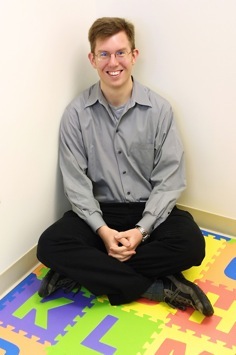非常抱歉,
你要访问的页面不存在,
非常抱歉,
你要访问的页面不存在,
非常抱歉,
你要访问的页面不存在,
验证码:

职称:professor
所属学校:Carnegie Mellon University
所属院系:linguistic
所属专业:Linguistics
联系方式:412-268-6747
My research explores learning in infancy and childhood. When we think about the differences between what infants and adults know, it’s apparent that infants need to learn about a tremendous number of complex systems. How do infants master all of this complexity? What learning mechanisms are available to infants, and what are the constraints on those mechanisms? To answer these questions, I focus on language acquisition. Language is perhaps the most complex system that infants will ever acquire. However, language’s complexity is of a particular kind: languages consist of multiple levels (for example, sound, word order, and meaning), each of which is partially determined by structure at other levels. My aim is to understand how infants integrate all of these levels, and use structure at one level to aid them in acquiring other levels. In particular, my research focuses on the ways in which infants learn to take advantage of the auditory structure of language. This work can be divided into two broad aims. The first line of research asks how infants learn which auditory events provide cues to linguistic structure. Early in the first year of life, for example, infants recognize the rhythmic structure of their native language, and use rhythm to help them discover words in fluent speech. Similarly, in the first years of their life, infants learn which sounds are meaningfully different in their language, and which distinctions are unimportant. What information do infants use in order to begin taking advantage of these types of auditory regularities? My second line of research asks more basic questions about the learning mechanisms available to infants. Recent research indicates that infants are very sensitive to the probabilistic nature of their environment, and learn quite rapidly which events predict other events (for example, that the first syllable in the word “pretty” predicts the second one). In a series of experiments with infants and adults, I have examined what types of probabilistic information people use to learn language, what contexts facilitate the use of that information, and how learning differs across domains and between infancy and adulthood. The answers to these questions will eventually provide an understanding of processes that may be critical to many aspects of development.
My research explores learning in infancy and childhood. When we think about the differences between what infants and adults know, it’s apparent that infants need to learn about a tremendous number of complex systems. How do infants master all of this complexity? What learning mechanisms are available to infants, and what are the constraints on those mechanisms? To answer these questions, I focus on language acquisition. Language is perhaps the most complex system that infants will ever acquire. However, language’s complexity is of a particular kind: languages consist of multiple levels (for example, sound, word order, and meaning), each of which is partially determined by structure at other levels. My aim is to understand how infants integrate all of these levels, and use structure at one level to aid them in acquiring other levels. In particular, my research focuses on the ways in which infants learn to take advantage of the auditory structure of language. This work can be divided into two broad aims. The first line of research asks how infants learn which auditory events provide cues to linguistic structure. Early in the first year of life, for example, infants recognize the rhythmic structure of their native language, and use rhythm to help them discover words in fluent speech. Similarly, in the first years of their life, infants learn which sounds are meaningfully different in their language, and which distinctions are unimportant. What information do infants use in order to begin taking advantage of these types of auditory regularities? My second line of research asks more basic questions about the learning mechanisms available to infants. Recent research indicates that infants are very sensitive to the probabilistic nature of their environment, and learn quite rapidly which events predict other events (for example, that the first syllable in the word “pretty” predicts the second one). In a series of experiments with infants and adults, I have examined what types of probabilistic information people use to learn language, what contexts facilitate the use of that information, and how learning differs across domains and between infancy and adulthood. The answers to these questions will eventually provide an understanding of processes that may be critical to many aspects of development.